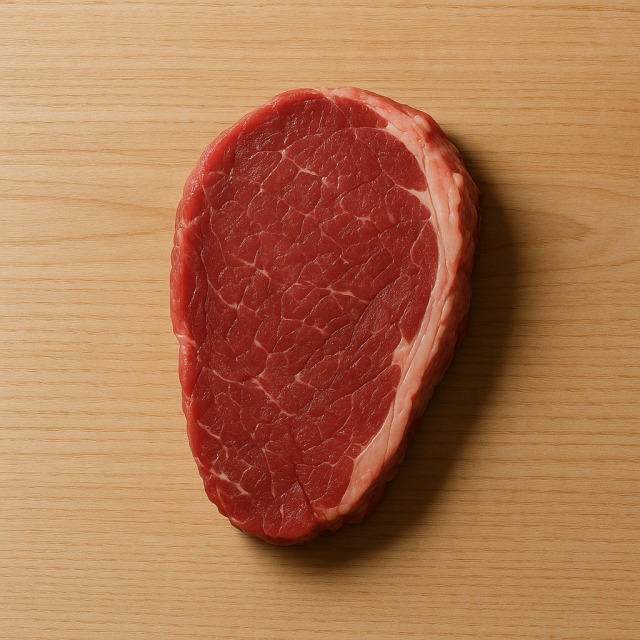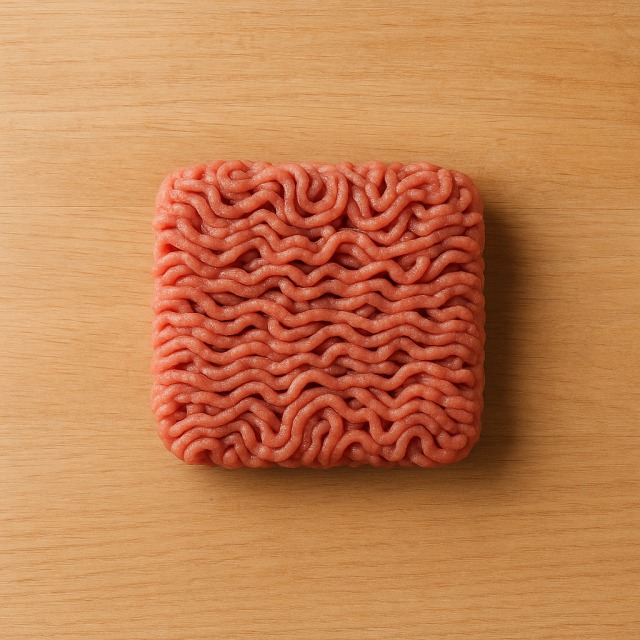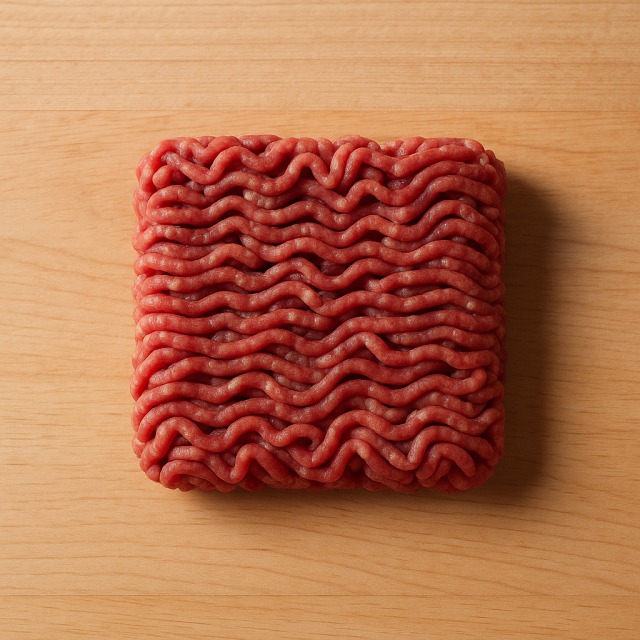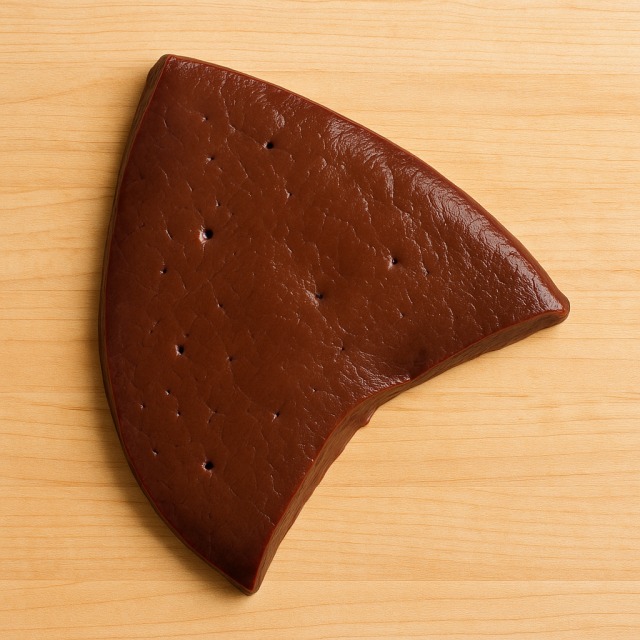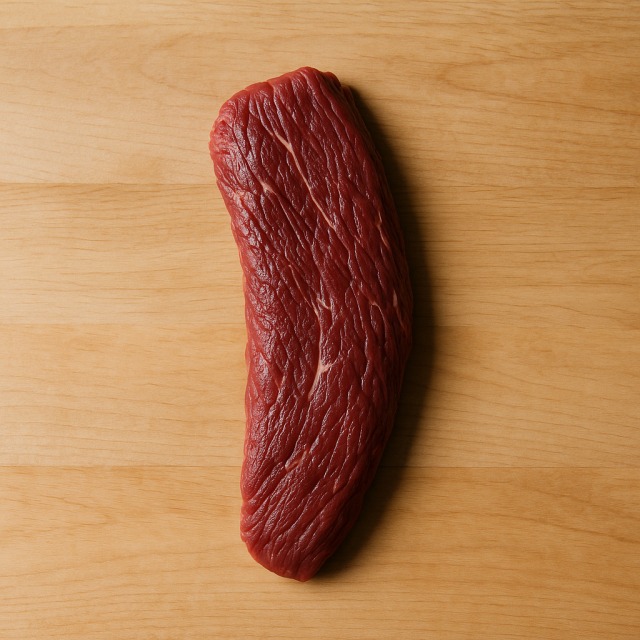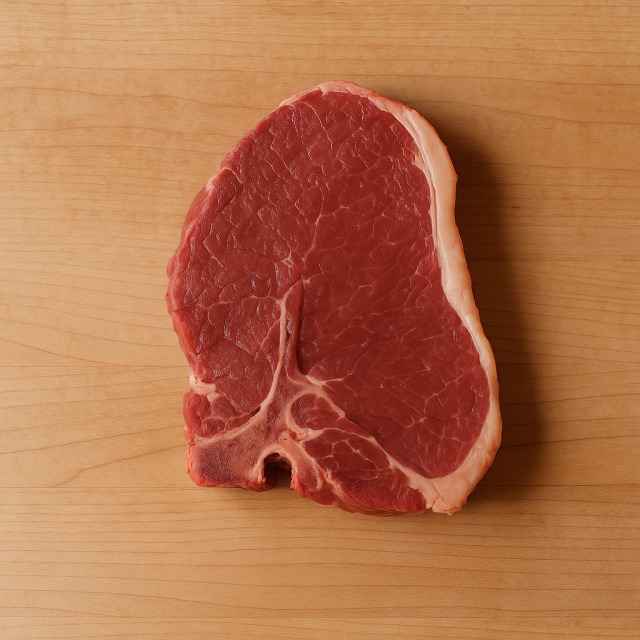Calorie Chart / Meat & Eggs / Beef - Rib-eye steak
How Many Calories Are in Rib-eye steak?
Calculation of the nutritional value & Recommended Dietary Intake of rib-eye steak
For g and a calorie requirement of kcal
| Calories 270 kcal | Proteins 30 g | Lipids 17 g | Carbohydrates 0 g |
| 14% | 40% | 25% | 0% |
Health benefits of rib-eye steak
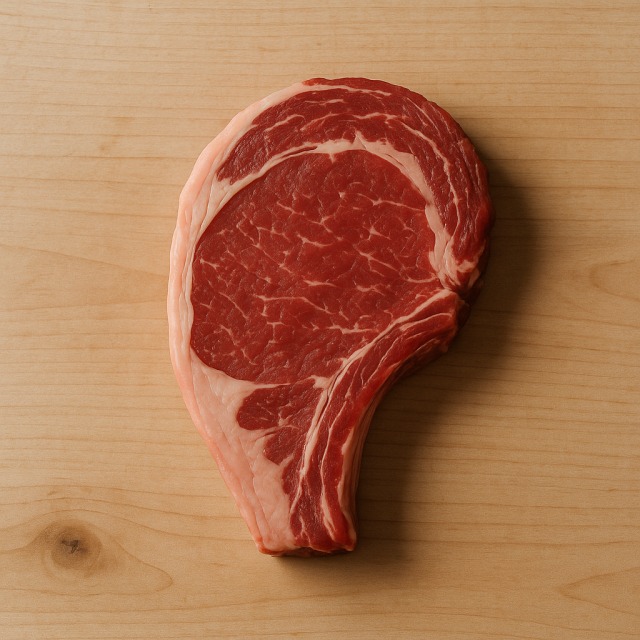
Rib-eye steak - 100g
Calories 180 kcal
Proteins 20 g
Lipids 11 g
Carbohydrates 0 g
Rib-eye steak is considered a moderate-calorie cut among red meats, making it interesting for anyone tracking calories without wanting to compromise on taste. Those moderate calories come mostly from its high-quality proteins and unsaturated fats, providing sustained satiety so that total daily calories can be better managed.
On the micronutrient side, rib-eye steak supplies heme iron, vitamin B12, zinc, and selenium, four nutrients often lacking in low-calorie diets. It also contains carnosine and creatine, two compounds valued by athletes for supposed support of muscular performance ("supposed" because clinical evidence is still being discussed). These advantages mean that the calories you consume bring more than energy: they also deliver essential building blocks.
A culinary curiosity: the French name "entrecôte" literally means "between the ribs." Historically, butchers saved this juicy piece for festive meals, when nobody was counting calories. Today, thanks to leaner breeding practices, its calories have dropped compared with older, fattier generations, without sacrificing the marbling that gives flavor.
In short, rib-eye steak offers nutrient density that justifies its calories, especially for people who need iron or extra proteins while keeping total calories in the moderate range.
Tips for incorporating rib-eye steak into a balanced diet
To keep the meal balanced, grill your rib-eye and serve it with a generous portion of steamed broccoli, a drizzle of pepper sauce on the side, and a cup of brown rice. This trio moderates overall calories while adding fiber and slow-release carbohydrates that help distribute calories smoothly over the afternoon.
If you crave a classic bistro plate, pair the steak with a salad of tomato and arugula rather than French fries; you will slash empty calories yet keep the visual appeal. A spoon of Béarnaise sauce occasionally fits, but mind the extra calories and measure it sparingly.
Looking for a protein-packed post-workout dish? Slice leftover rib-eye thinly and toss it into a warm bowl of vegetable soup. The broth adds volume with minimal calories, helping you feel full while controlling daily calories.
Whichever recipe you choose, let the steak rest before cutting to keep juices—and therefore nutrients and calories—inside the meat rather than on the board. Balance the rest of the day by favoring low-calorie snacks such as a fresh apple or a handful of hazelnut kernels so that total calories remain in line with your goals.
Frequently Asked Questions
- How many calories are in rib-eye steak?
- Rib-eye steak provides 180 kcal per 100 g.
- Is rib-eye steak too high in calories for weight loss?
- At 180 kcal per 100 g, rib-eye steak falls into the moderate-calorie category; portion control and low-calorie side dishes make it compatible with most weight-loss plans.
- Does trimming visible fat lower the calories significantly?
- Removing the outer fat cap can save roughly 20–30% of the calories from fat, but the intramuscular marbling that defines rib-eye still contributes calories and flavor.
- Which cooking methods keep calories lowest?
- Grilling, oven-roasting on a rack, or pan-searing without added butter minimizes extra calories compared with frying in oil.
- How does rib-eye compare in calories with a chicken breast?
- A skinless chicken breast is lower, around 110 kcal per 100 g, so substituting can lower total calories, but rib-eye offers more iron and vitamin B12.
Similar foods
Information provided by Calorie Menu may contain inaccuracies or errors. It cannot, under any circumstances, substitute medical advice or medication.
